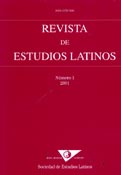The Polysemy of ius, iuris (‘law’, ‘dressing, sauce’) and the genuine idea (‘union’) of Roman Law
DOI:
https://doi.org/10.23808/rel.v10i0.87814Keywords:
ius; polysemy; homonymy; specialization; law; sauce.Abstract
Ius, iuris (‘law’ and ‘sauce’) was originally one word from the same root as iungere ‘to join together’). From the meaning ‘union’ that it had in ordinary language, it evolved into the two technical usages that are conserved in historical times. We believe that this hypothesis is supported by clear methodological criteria and by sound arguments. Because of this, we should not reject it for tenuous phonetic reasons or because of supposed semantic difficulties. If attention is paid to the difference between ordinary and special language, to the instrumental sense with which each meaning of ius develops into a technical term, the oral character of the legal ius and to the numerous analogies between legal, culinary and even medical formulae in different languages, the etymological unity of ius seems obvious.
Downloads
Downloads
Published
How to Cite
Issue
Section
License
Copyright (c) 2010 Revista de Estudios Latinos

This work is licensed under a Creative Commons Attribution-NonCommercial-NoDerivatives 4.0 International License.
The originals published in the printed and electronic editions of this journal are the property of the Revista de Estudios Latinos and can be circulated as long as the original source and authorship is made clear in any reproduction, full or partial, of the same, and as long as this is not done for commercial purposes.






